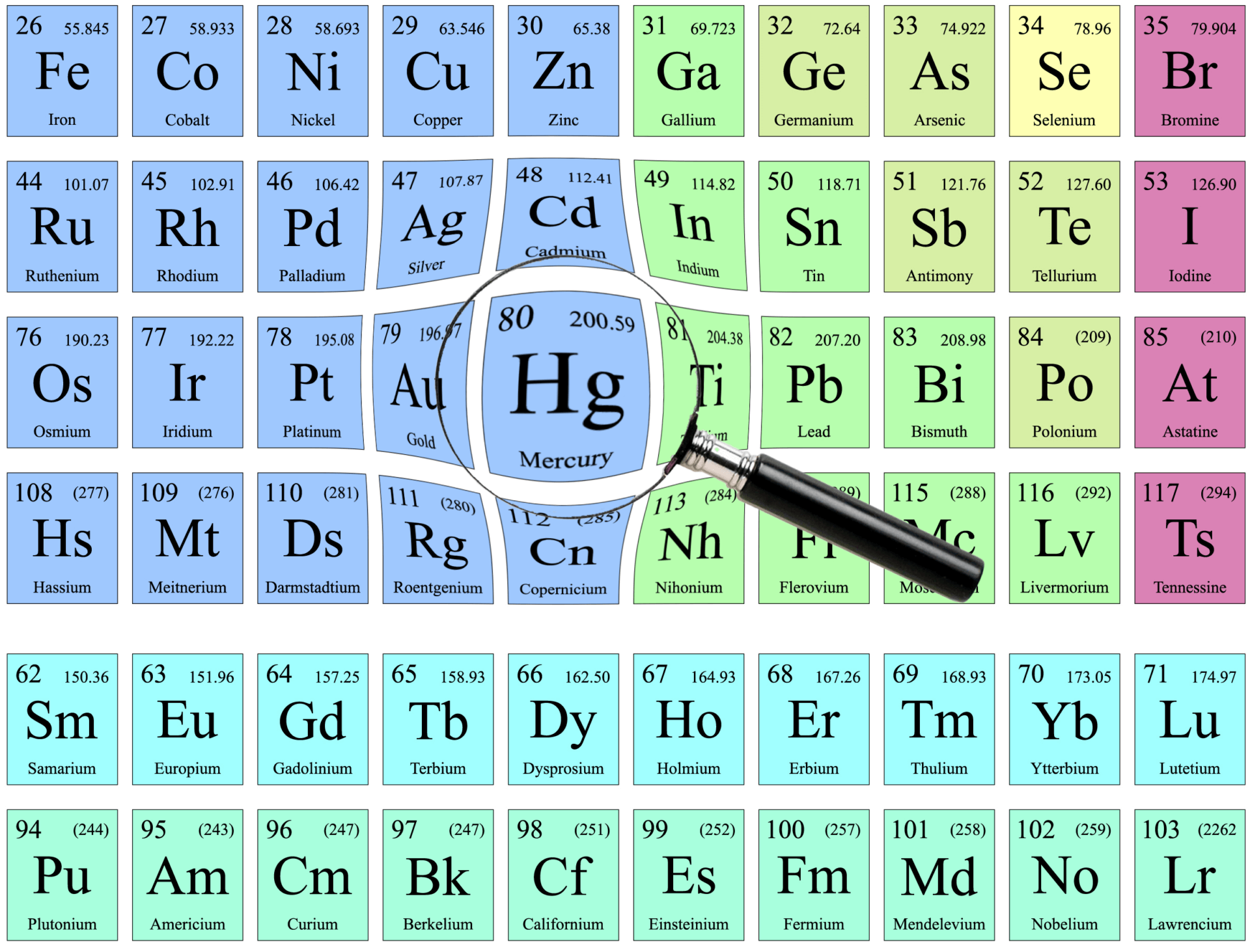
Understanding Mercury
What is Mercury?
Mercury (Hg) is a naturally occurring chemical element found in three forms: elemental (metallic) mercury, inorganic mercury, and organic mercury.
– Elemental mercury is a shiny, silver-white liquid metal at room temperature, often referred to as quicksilver. It evaporates into invisible, odourless, and toxic mercury vapor.
– Inorganic mercury results from mercury combining with other elements. For instance, mercuric sulfide contains sulfur, mercuric oxide contains oxygen, and mercuric chloride contains chlorine. These compounds mostly appear as white powders or crystals.
– Organic mercury occurs naturally in the environment, released from the Earth’s crust, and can be found in fossil fuels, soil, rocks, and volcanic activity.
What Is Mercury Used For?
Historically, mercury was used in various industrial and domestic products, from batteries, auto switches, and HVAC equipment to cathode-ray tubes (CRTs), dishwashers, and lamps. It was an additive in paints, pesticides, rubber flooring, and cosmetics.
Today, despite a better understanding of its toxicity, mercury remains essential in various manufacturing processes, including chlorine, cement, caustic soda, and sulfuric acid production. It’s also used in power generation and dental care applications. Mercury is present in thermometers, barometers, electrical switches, relays, fluorescent lighting, and lighthouses.
Health Impacts of Mercury Exposure
Exposure to mercury, which can occur through inhalation, ingestion, or skin contact, depends on factors like the amount, method, and duration of exposure. Symptoms of mercury poisoning may include itching, burning, or peeling skin, and some compounds can cause allergic reactions. Excessive exposure can lead to brain and kidney damage.
Monitoring Mercury
Occupational exposure to mercury occurs in various workplaces, such as waste and recycling, electrical equipment manufacturing, and chemical processing plants. The Mercury Vapour Indicator (MVI) offers a fast and accurate solution, detecting mercury in just three seconds without relying on gold film regeneration.
The MVI provides continuous readings with two detection ranges, covering EU-OSHA PEL and IDLH requirements. Its high-performance pump ensures quick indication and recovery, and the instrument features an audible alarm and a large digital display to indicate mercury levels. Portable and with excellent battery life, the MVI reduces monitoring costs, and an optional data logger is available. Ergonomically designed for one-handed operation, the MVI is ideal for rapid and reliable mercury detection.
Watch the Mercury Vapour Indicator video for more information.







 United Kingdom
United Kingdom






